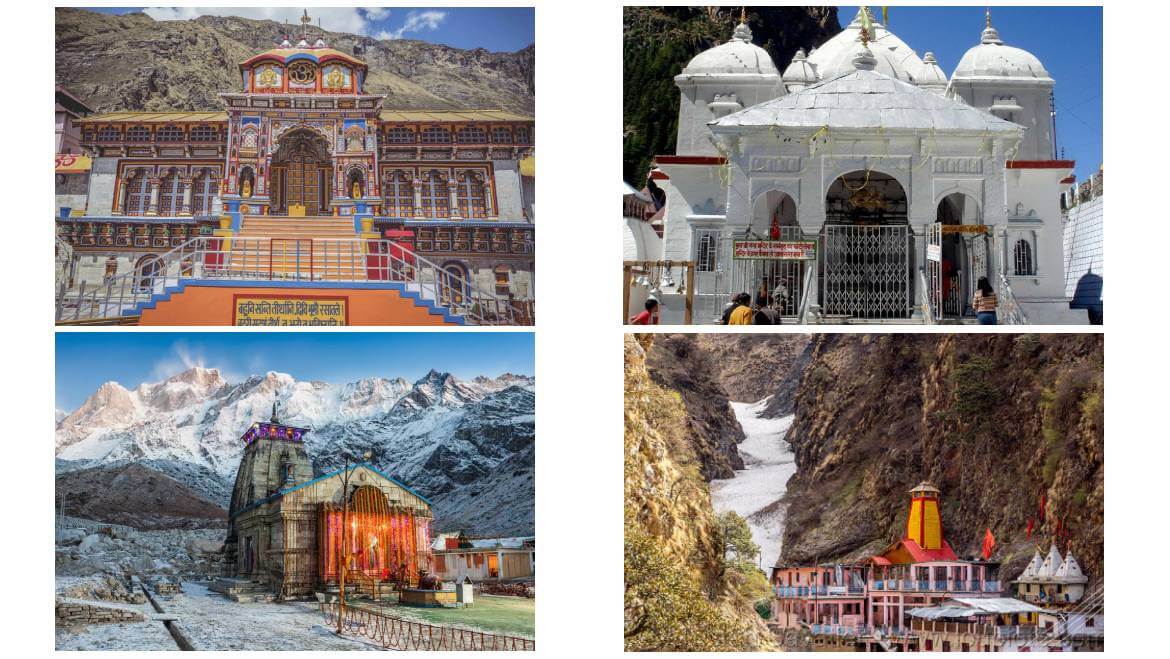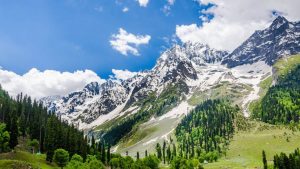Nestled in the lap of mesmerizing Indian Himalayas in Uttarakhand, Char Dham is the epicentre of spiritual actions for Hindus in India.
India is full of the scenic tourist charms. In this country, spiritual beliefs, cultural values and heritage wonders are some of the major reasons that influence the pilgrims to plan an expedition. The land of temples with plenty of sacred destinations, India is undoubtedly a paradise for the seekers of tranquillity and spirituality.
Out of these pilgrimages, Char Dham Yatra in the state of Uttarakhand, boasts of some of the most visited centers. The Hindus describe it as the Teerth Yatra (pilgrimage) to four well known dwellings of the Hindu Gods namely Yamunotri, Gangotri, Kedarnath and Badrinath. These four pilgrimage sites are located in the different districts of Uttarakhand.
Recommended Tour Packages
Importance of Char Dham in Hindu Religion
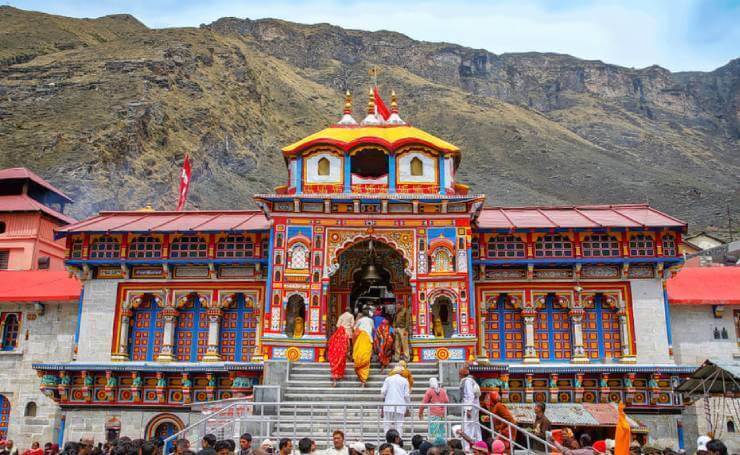
The Char Dham Yatra is considered as a must visited pilgrimage tour in order to get salvation. Every year, more than 2 Lac tourists visit these holy shrines. In Hindu mythology, it is believed that the prehistoric Hindu philosopher Shri Adi Shankaracharya coined the term ‘Char Dham’. The literal meaning of this term is four abodes of God or Holy Destinations. These four shrines are in the region that is famous for the captivating mountains surrounded by a thick layer of snow and unadulterated atmosphere.
In India, the Hindus believe that the Char Dham tour opens the gates of salvation by washing away all their sins. It is also believed that this journey must be undertaken at least once in a lifetime. These four shrines have a great significance and place in Hindu mythology. According to this mythology, Shri Adi Shankaracharya acquired freedom from reincarnation in the Shri Badrinath Dham. The doorway to the Yatra is Yamunotri. Next destination is the renowned Gangotri shrine. Thereafter the pilgrim has to visit Shri Kedarnath Dham and finally Shri Badrinath Dham. After completing the Char Dham pilgrimage tour, the pilgrim achieves an absolute serenity of the mind.
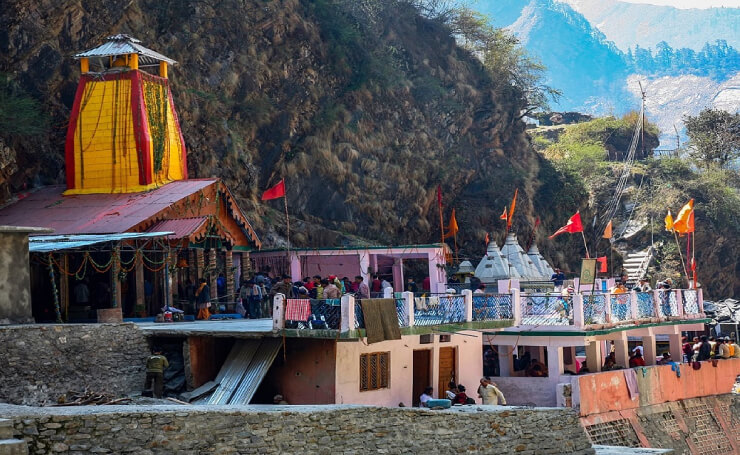
Yamunotri Dham is a preferred pilgrimage destination for Hindus as it boasts Yamunotri- the source of the sacred Yamuna River. For this holy river there is a mythological story among Hindus that the Yamuna was the sister of Yamraj and therefore on Bhai Dooj, Yamraj promised Yamuna that whosoever will take a dip in the Yamuna River will not be taken to Yamlok and he would attain salvation. Yamunotri Dham, situated at the altitude of 3164 mts from sea level, sanctifies millions of visitors visiting this holy pilgrimage.
The shrine is the seat of Goddess Yamuna and the source of the Yamuna River. It is the westernmost pilgrimage in Garhwal. The major points of attraction here are the temple devoted to the Goddess Yamuna and the Janki Chatti’s sacred thermal springs. The environment here is purified with the cold tides of Yamuna. The sides remain warmed up with the thermal springs popular as Kunds of Hindu Goddess ‘Shakti’.
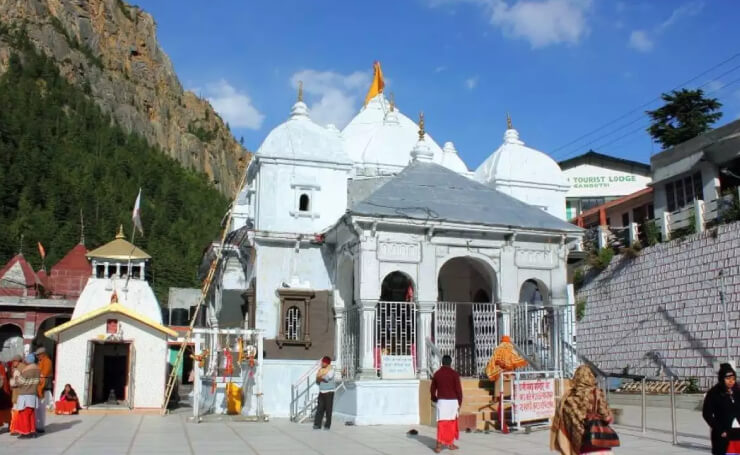
The major highlight of Gangotri Dham is Gomukh, which is the origin point of the Holy River Ganges. It is believed that after King Bhagirath meditated for a long time, river Ganga came to earth. The stone on which King Bhagirath did his meditation is located near Ganga Temple in Gangotri. The Gangotri Dham is located at an altitude of 3200 meters in the middle of imposing surroundings along the bank of river Bhagirathi.
Here, a special ‘puja’ of Ganga River is organized both inside the shrine as well as on the bank of the river. A beautiful temple dedicated to Goddess Ganga is located in this pious area. It is believed that the holy river Ganga is the source of sanctity and purity. Therefore, before visiting the temple, the pilgrims take a dip in this great river.
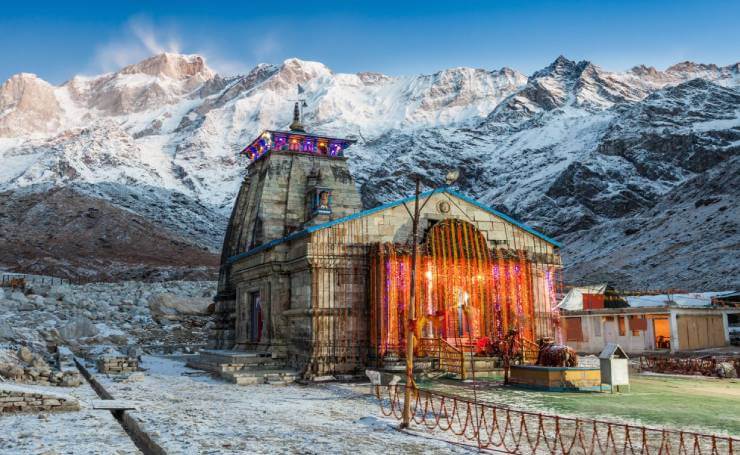
Shri Kedarnath Dham is a prominent pilgrimage for Hindus as it is one of the twelve jyotirlingas of Lord Shiva, the God of destruction. Kedarnath, Kalpeshwar, Tungnath, Madhmaheshwar and Rudranath shrines are together known as Panch Kedar. Adi Shankaracharya restored the temple. Kedarnath Temple is named after the ruler of Satyuga ‘Kedar’. The shrine is open from April end till Kartik Poornima.
The Significance of Shri Badrinath Dham can be understood from the fact that it is considered as the most sacred among the four shrines. Located at an elevation of 3,133 meters from the sea level, the Dham is on the left bank of the Alaknanda River. The Dham is dedicated to Lord Vishnu, the protector and preserver of the divine Hindu Trinity (Brahma, Vishnu, and Shiva). These sacred temples of Lord Vishnu are also known as Vishal Badri. This region has also witnessed Saint Adi Shankaracharya getting freedom from the process of reincarnation.
Other Important Information Links
Like & Follow our social media accounts at Twitter, Facebook, Linkedin & Instagram for getting the latest updates & offers on holiday packages.
Disclaimer: We do not take credit for some of the licenced paid images used in our blogs, whether from Google Images, Fotolia & Shutterstock. All such images are the copyrights of their respective owners and we try to provide credit for them wherever we can. If, however, any copyright image has been used on our blog, the concerned person can either mail us directly to remove the image or provide credit to whomsoever the image may belong to.

 +91-9212777225
+91-9212777225 Plan Your trip
Plan Your trip